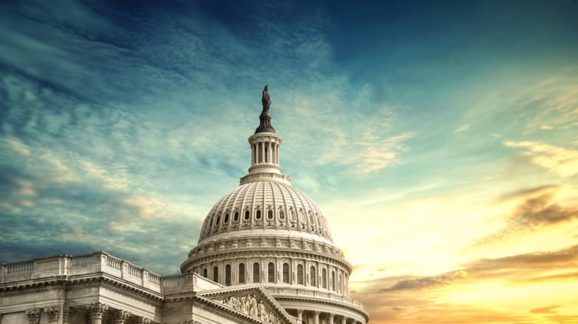What Should the Government Do?

In that question lies most disagreements about politics. What can governments do, and just because they can, should they?
Government has specific core roles and functions: to protect us, to manage the treasury, and to provide justice. But our federal government is growing larger and larger, taking on new and more diverse roles each year. And as human history marches inevitably onward, new challenges come into being. Those who believe that the government should solve each and every new problem should question whether or not it will be most effective.
When it comes to streamlining the government, one often overlooked snag hampering reform initiatives is the Office of Personnel Management (OPM), whose hands seem to be in the all proverbial pots. All agencies have to work with the agency, and astutely abide its regulations and guidelines, which range from pay and leave to pandemic procedures.
These guidelines are not easily able to be skipped over either, as the House Oversight Committee examined in its 2018 report “Shining Light on Regulatory Dark Matter,” 46 agencies reported 13,000 guidance documents issued since 2008. These can be cumbersome, to say the least, but the OPM puts in an outsized chunk, with my count clocking it at 4,072 guidance documents (Scroll down to Appendix DD in the link)
OPM would have a hand in the many looming mega-projects to which some in government wish to commit Washington, for better or worse. The “Green New Deal” is a dominant one currently in the mix and whose sheer size would overwhelm.
While vague and aspirational, it doesn’t take much imagination to imagine the sweep that the Green New Deal’s implementation would involve if attempted. Just one plank among many in the Resolved Clauses section calls, for example, for “cleaning up existing hazardous waste and abandoned sites, ensuring economic development and sustainability on those sites.”
This task will most likely require the hiring of new workers and/or contractors at the Environmental Protection Agency (EPA), who will go out and clean sites and address “sustainability.” Managers will need to ensure these workers get hired correctly under OPM standards, and to do this, they need to keep in line with the various hiring authorities under the department. The hiring authorities include but are not limited to: the Veterans Employment Opportunity Authority, Disabled Veterans Appointing Authority, People with Disabilities Appointing Authority, and various appointments.
OPM functions as an expansive human resources department for federal agencies, covering everything from employee services, retirement services, health care and insurance, merit system accountability and compliance, and other goals. OPM issues some form of guidance on a great many of these, and would be neck deep in administering the Green New Deal.
Of course, the involvement doesn’t end at hiring. These workers will also need health care, for which there are significant regulation and signup requirements. They will have to maintain a work-life balance, all of which takes time to do and over which OPM has ample input and responsibilities. Of course, along with the extra weight of the OPM, the new hiring would have to comply with some of the internal workings and human resources codes and goals explicitly from the EPA alone, adding on to the already large size of the OPM.
The GND envisions a 10-year horizon—but in meeting that ambitious objective, it is unclear if the architects have taken into account the federal government’s own self-imposed regulations. Likely not.
Not to say the GND is wise, but as far as such targeted environmental cleanups are concerned, the private sector—startups and big businesses—could probably do a better job at tackling these and other tasks to the extent the red tape is less onerous.
Another resolution in the GND vows “building or upgrading to energy-efficient, distributed, and ‘smart’ power grids, and ensuring affordable access to electricity.”
Obviously, businesses that design these grids are much better for suited for such a goal than EPA employees. Many companies have their own human resource departments, but the equivalent of an OPM doesn’t exist for them, and there would be less pressure for make-work ping-pong with burdensome regulations.
Unlike OPM, they face strong competitive incentives to find ways to streamline and focus those goals on efficiency. There may be fewer other hiccups, such as more comprehensive but rapid, background checks, and an absence of political partisanship in hiring processes. Companies move as they see fit, but respond to competition, changing with more ease and agility. Big business has a bottom line, and that is always profit.
For all of the bemoaning of OPM’s exhaustive rules for agencies, a cynical view might be that it is probably for the better that some of these regulations and guidelines exist. Political corruption from the top down, the federal workers taking bribes from outside influences, and the corrosion of integrity in other countries’ national workforces is something no one wants, and arguably OPM prevents some of that here, excesses aside.
Yet this has tradeoffs. In preventing government corruption, OPM forces the government to move at a snail’s pace and the takeaway is that policy makers need to incorporate OPM in any effort to streamline government regulation and operations. On day one, companies can get right to work on the task at hand. In contrast, the government gets to the task at hand on day two at the earliest, since day one is devoted to pandemic response procedures.